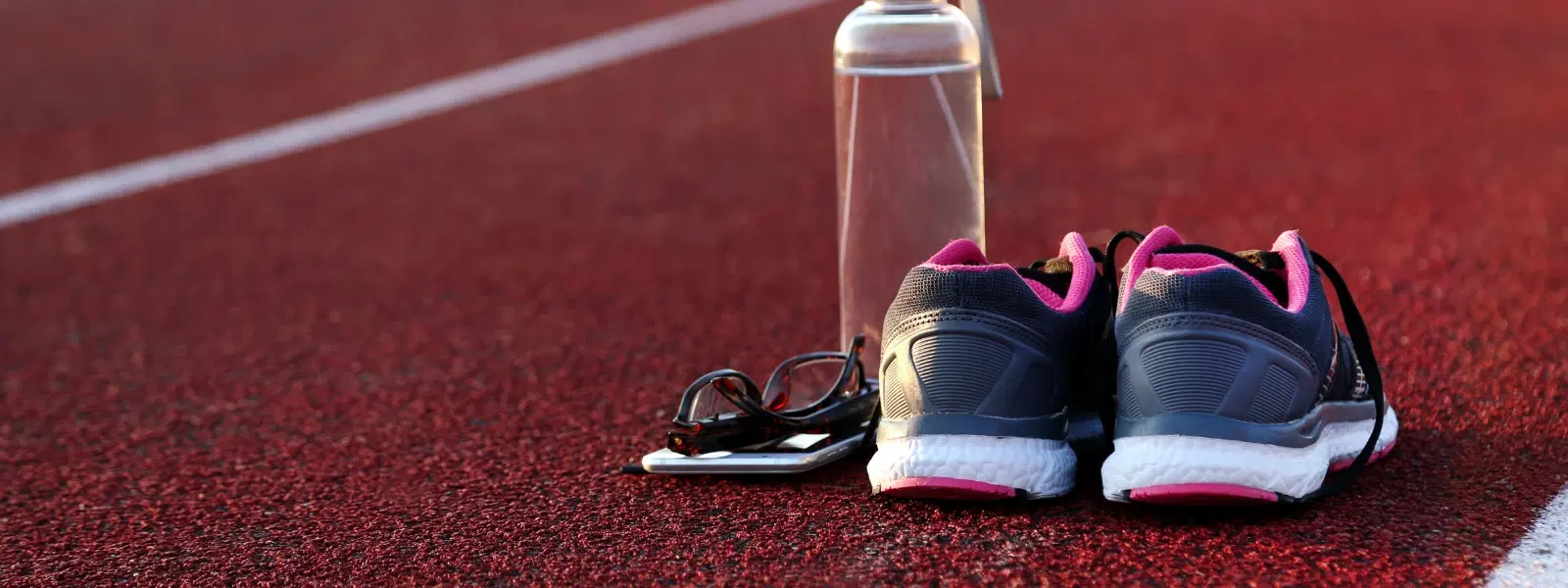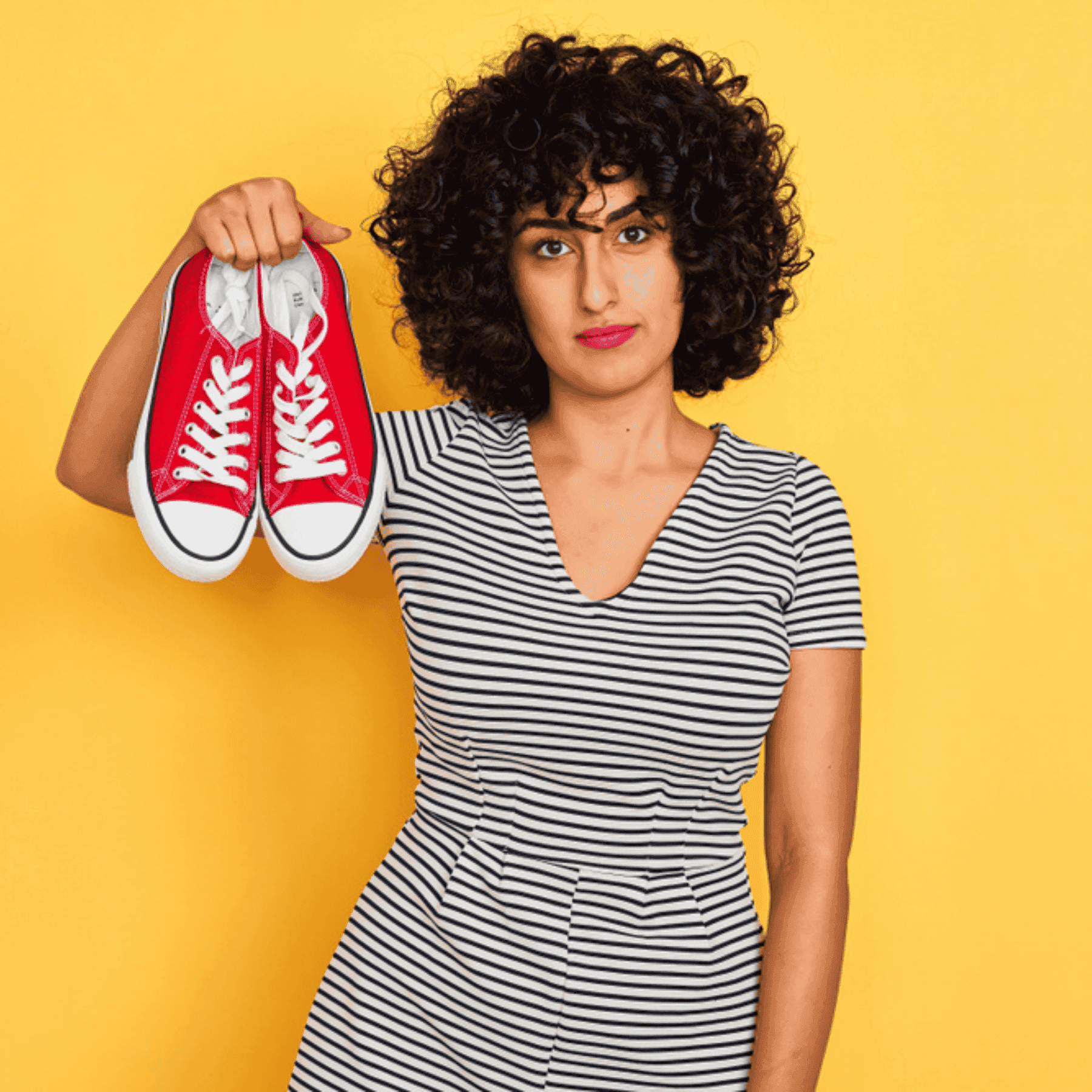
Footwear Guide
•04 min read

Finding the right running shoes can transform your running experience. The perfect pair not only boosts performance and comfort but also safeguards against injuries on various terrains. Running shoes are more than just functional gear—they can be an extension of your personal style, allowing you to express your individuality while pursuing your fitness goals. In this guide, we break down how to choose running shoes for every terrain while hopping on trends and expert running shoe buying tips.
Road running shoes are perfect when you run on smooth surfaces such as sidewalks, pavements, and asphalt. They are built with a focus on lightweight running shoes design, offering extra cushioning and smooth transitions. Look for cushioned running shoes that provide shock absorption and breathable running footwear to keep feet cool on long runs. Flexible soles also add to the ease, letting you glide over hard surfaces with confidence. Consider styles with vibrant colors or sleek designs to add a touch of personality to your running gear.
When you hit rugged paths, rocky trails, or forest floors, trail running shoes offer unmatched stability and safety. These shoes focus on rugged durability with reinforced uppers and excellent grip through aggressive tread patterns. Look for durable running sneakers often made from waterproof or water-resistant materials to keep your feet dry in wet conditions. A trail running shoes guide can help you match your running style with the features you truly need. You can also explore bold patterns or earthy tones that reflect the adventurous spirit of trail running.
If your runs cover a mix of terrains, hybrid running shoes might be the ideal choice. They blend the benefits of both road and trail shoes, embracing cushioned running shoes features while delivering the durability needed for uneven surfaces. This combination makes hybrid options versatile and perfect for those who love a variety of terrain challenges. Opt for designs that combine function and flair, ensuring your shoes stand out while performing well.
Cushioning is crucial when it comes to preventing injuries and ensuring lasting comfort. Whether you run long distances or simply enjoy a leisurely jog, support plays a key role. Consider neutral cushioning if you have a stable gait or opt for extra stability shoes if you need additional arch support. Cushioned running shoes are also an excellent choice for recovery days when you want to ease the pressure on your joints. Explore options that combine comfort with style, such as shoes with unique sole designs or modern accents.
A well-ventilated pair of running shoes makes all the difference in controlling heat and moisture. Breathable running footwear made from mesh materials helps reduce sweat and keeps your feet cool during extended runs. This feature becomes even more important as you take on intense or long training sessions. Look for mesh designs that incorporate eye-catching patterns or innovative textures for a fashionable edge.

Paying attention to how your running shoes fit will help you avoid blisters and discomfort. Always check for a snug heel fit without any slips, and ensure there is adequate toe room to accommodate natural foot swelling during your runs. When trying on shoes, remember these tips: measure your feet later in the day, always try shoes with your preferred running socks, and test them out with a quick walk or jog to get the real feel. Many brands now offer custom-fit options or stylish tweaks to enhance both comfort and appearance.
For everyday runs, choosing lightweight running shoes is key. These shoes balance comfort and durability while being adaptable for casual jogging or consistent training. They work great for beginners or those who run daily and appreciate comfortable running footwear that supports a relaxed pace. Opt for neutral tones or classic designs that seamlessly fit into your daily workout wardrobe.
If you are looking to improve your pace, tempo running shoes might be the answer. Designed with minimal cushioning, these shoes are lightweight yet provide a propulsive feel. They are tailored for speed, giving you the push you need on faster, shorter runs. Bright colors or aerodynamic designs can add a stylish edge as you chase your personal best.
Race-day shoes are engineered for performance and speed. Often featuring carbon plates for energy return and ultralight materials, they are designed for competitions and serious events. The focus here is on achieving a competitive edge on race day while keeping the load light and agile. Sleek designs and bold accents can make you feel confident and ready to conquer the track.
Understanding your foot's natural motion is essential. A running gait analysis helps determine whether you have a neutral gait, overpronation, or supination. This analysis can guide you in selecting shoes that complement your running mechanics and provide the support that suits your running form best.
Before finalizing your purchase, test the shoes in a small run. Walk, jog, or run briefly to assess comfort, fit, and overall performance. This practical test will help you decide how the shoes respond to your running style and whether they meet your needs as a part of your running kit.

Long-lasting running shoes are an important investment. Look for durable running sneakers that can handle your running mileage. Check for features like reinforced stitching, high-quality materials, and a durable outsole. A careful examination of these aspects ensures that your shoes will remain reliable over time and through various conditions.
Expert Tip: Don’t Choose Based on Looks Alone
While styling is appealing, always prioritize functionality. A shoe that fits well and supports your running mechanics will always be better in the long run than one that is stylish but lacks essential features.
Focus on the surface you will run on and prioritize cushioning, traction, and durability that matches your running environment.
Road running shoes are light and cushioned for smooth surfaces, while trail running shoes emphasize durability and grip for rugged paths.
Check for a proper fit with enough space at the toe and a snug heel. Test the shoes with your running socks to be sure.
It is commonly recommended by experts to replace them every 300-500 miles or when you notice reduced cushioning or wear in the tread.
Yes, they help in shock absorption and provide more comfort during long distances and recovery sessions.
Selecting the perfect running shoes is a blend of understanding your terrain, knowing the key features, and matching your running style to the right choice. This guide has covered everything from road running shoe recommendations to thoughtful tips on testing and durability. Whether you aim for cushioned running shoes for long runs or durable trail running sneakers for off-road adventures, the right pair will offer comfort, support, and boost your confidence in every step. Enjoy the journey towards your best performance while keeping pace with style and comfort.